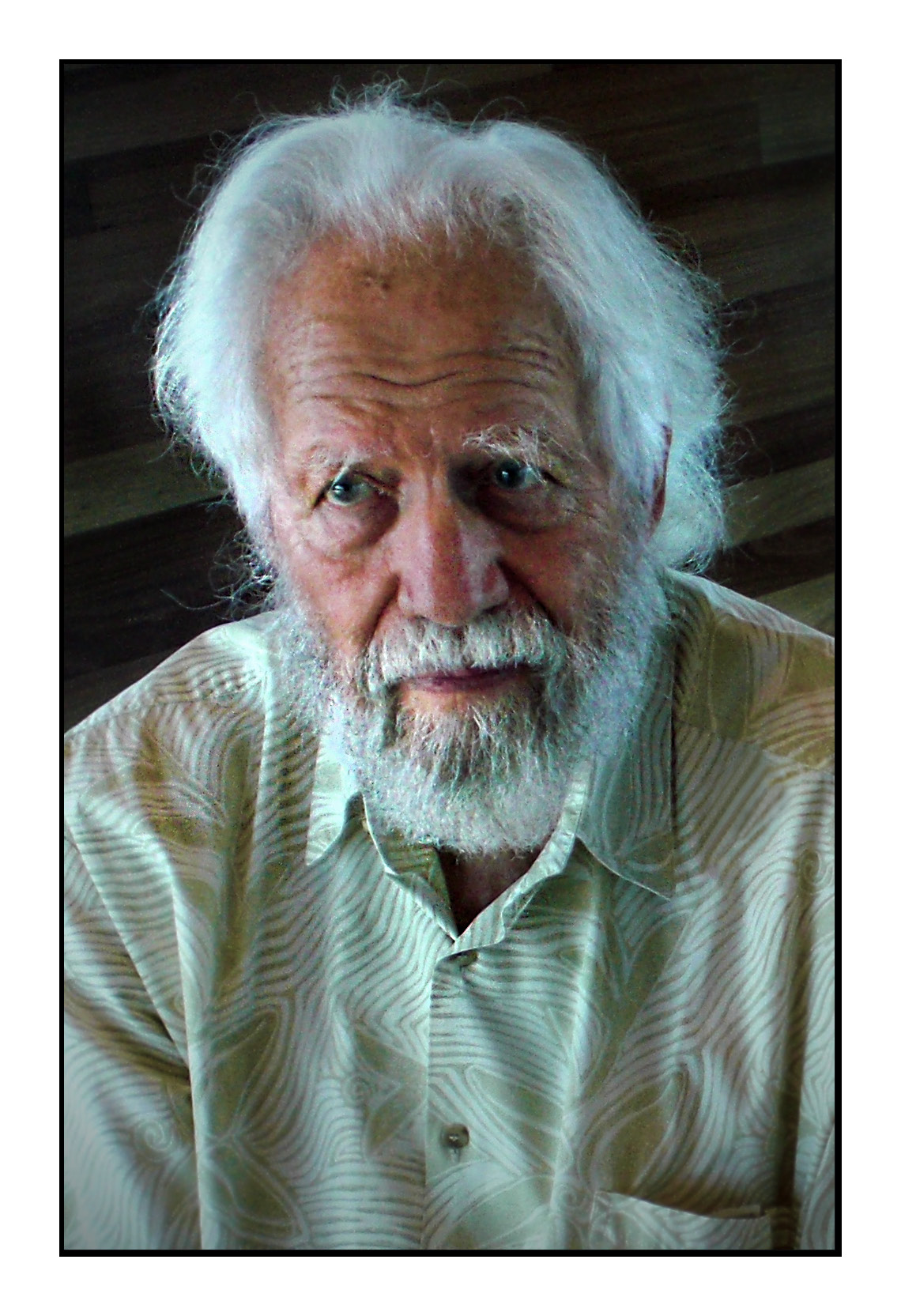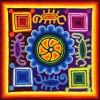Alexander Theodore Shulgin
June 17, 1925 -- June 2, 2014
June 5, 2014

|
After working as a research director for Bio-Rad Laboratories, Sasha joined Dow Chemical Company as a senior research chemist. While at Dow, Sasha developed the first biodegradable pesticide. Marketed under the brand name "Zectran", the product ultimately became highly profitable for Dow, who consequently allowed Sasha complete freedom in his pursuit of the science of chemistry. Following his first experience with mescaline in 1960, Sasha found his calling: he would devote his research efforts to the field of psychedelic chemistry. Over the course of his lifetime, Sasha explored hundreds of psychedelic compounds, many of which he invented. He characterized their psychoactivity through careful scientific bioassays. In the process, he was able to tease out a wealth of information regarding the relationship between the chemistry of a novel molecule, and the changes that might result in its pharmacology and potency when slight alterations were made to the chemical's structure, particularly at what Sasha termed "the magic 4-position". His attention was drawn to the 4-position after he conceived of and synthesized the compound DOM, which he bioassayed on January 4, 1964 and discovered to be surprisingly potent: it was psychoactive at the 1 mg dose. Never before had a phenethylamine been found to produce any effects at such a low dose!
In 1966, Sasha left Dow and began working as an independent consulting chemist from a lab that he set up at his home. He served as an expert witness in court cases and occasionally conducted chemical analyses for law enforcement, while he continued to synthesize new compounds and to investigate their pharmacological effects. Over the years, he received several awards from the US Drug Enforcement Administration. To supplement his income as a private consulting chemist, Sasha at times gave lectures and taught courses in public health, forensic toxicology, chemistry, and the pharmacology of psychoactive drugs at UC Berkeley, UCSF, and other universities.
In 1971, he accepted a position as a pharmaceutical chemistry professor at San Jose State College. After he had already begun teaching classes, the Dean of the school informed him that he must get fingerprinted before they could process his first paycheck--a stipulation that surprised and irked Sasha. Forever a champion of civil liberties, Sasha told the Dean: "I consider the requirement of the Board of Trustees that an employee be fingerprinted prior to being paid an odious and unprincipled infringement upon one's personal privacy, and one that cannot serve any useful function to the college. I certainly do not accede to it." The Board wouldn't budge on their fingerprinting requirement for paid employees. However, when Sasha offered to continue teaching the course without remuneration, thereby not actually being a paid employee, they agreed to his creative solution. Throughout his life, Sasha never let his unwillingness to compromise his principles interfere with his generous good nature.
Sasha gained worldwide fame as the "Stepfather" or "Godfather of Ecstasy", following publication of a 1978 text that he co-authored with David E. Nichols, wherein they described the unique psychopharmacological effects of MDMA. Sasha developed a new synthesis for the drug, which had originally been made by Merck in 1912 but was never pharmacologically tested by them. In 1977, the year prior to publishing the description of MDMA's effects, Sasha had introduced the psychologist Leo Zeff to the compound. Zeff, who became a pioneer of the underground psychedelic therapy movement, was so impressed with MDMA's potential psychotherapeutic value that he postponed his planned retirement in order to introduce other therapists and clients to the substance. Many therapists found it to be an extremely useful medication. However, within a few years MDMA became widely popular amongst recreational drug users, resulting globally in governmental restrictions of the compound.
In the fall of 1978, Sasha met Ann Perry, a newly divorced psychedelic enthusiast who quickly became his most ardent supporter. They were married on July 4, 1981, and remained partners, lovers, fellow-explorers, and best friends for the rest of Sasha's life.
Sasha was a prolific author, producing countless journal articles and book chapters. In 1988, he released his book Controlled Substances: Chemical and Legal Guide to Federal Drug Laws (second edition 1992). Together with Ann, Sasha co-authored the fictionalized autobiographical chemistry books, PIHKAL: A Chemical Love Story (1991) and TIHKAL: The Continuation (1997). With Ann's daughter, Wendy Perry, he co-authored The Simple Plant Isoquinolines (2002). In 2011, with co-authors Tania Manning and Paul Daley, Sasha released The Shulgin Index, Vol. 1: Psychedelic Phenethylamines and Related Compounds. Several of his lab notebooks have been digitally published by Erowid.org. And his forthcoming book, The Nature of Drugs, is currently being edited for publication.
Sasha was also a popular and prodigious lecturer, affording him the opportunity to travel the world and speak at numerous events. Along with Ann, Sasha was a regular speaker at Botanical Preservation Corps seminars, Mind States conferences, MycoKosmos gatherings, and Burning Man playalogues. Sasha repeatedly expressed the importance of harm reduction through drug education, summed up in his four-word philosophy: "Be informed, then choose."
Psychedelics and empathogens were Sasha's most passionate interest, as he wholeheartedly believed that these drugs could be exceptionally valuable tools for self-discovery when properly used. "I am forever in their debt," he said, "And I will forever be their champion." An embodiment of integrity, Sasha set a wonderful example through the life he lived, epitomizing many of humanity's best qualities. He was intelligent, thoughtful, gentle, loving, compassionate, engaging, curious, considerate, joyous, humble, principled, insightful, hard-working, inspiring, selfless, kind, loyal, giving, friendly, creative, irreverent, entertaining, and wickedly funny. A lover of jokes and wordplay, Sasha's ever-present sense of humor leaned toward the ribald, veered into the black, but always banked on the corny; he quick-wittedly served a plethora of puns on the [2C-B-]fly, guaranteeing pained groans from all.
Sasha died of cancer. Many of those who have dipped into the bounty of pharmacological gifts that Sasha created share a wide-eyed sense of appreciation that they're unable to fully express. His presence will be missed--his life, long celebrated. He is survived by his loving widow, Laura Ann Shulgin, her children, Alice, Brian, Christopher, and Wendy, eight grandchildren, his dedicated caretakers, invaluable Team Shulgin members, and a vast network of dear friends and fans worldwide who comprise what the Shulgins call "the Tribe".

|


